Longines
The Modern Longines Pilot Majetek
Under his leadership, the company began to produce award-winning in-house movements with a number of complications and a reputation for reliability. The winged hourglass brand found its calling for pilot’s watches in the 1920s and ’30s with collaborations that included the famous aviator Charles Lindbergh and astronavigation expert Philip Van Horn Weems. The aviation tool watches produced by Longines soon caught the attention of military aviation divisions all around the world.
It was the Czechoslovak Air Force that directed the specifications for what would become the Longines Majetek model, an iconic pilot’s watch first commissioned in 1935 and used by Czechoslovakia’s pilots in the ’30s and during the Second World War. The military issued models were inscribed on the back with “Majetek Vojenské Správy” which means “property of military administration” and were considered as part of their standard issued equipment. The watch was nicknamed the “Tartarugone,” which is Italian for “large turtle” due to the unique curved cushion case shape, fitted to receive a very large leather strap of 24mm.
The Original
Beginning in 1935, Longines supplied the Majetek pilot’s watch (reference 3582) with three different movements. The first model supplied by Longines was powered by caliber 15.94 with antimagnetic and shock resistant properties. While other watch companies were also furnishing Majetek models to the Czechoslovak Air Force during this time, the Longines Majetek stood out. The case was an oversized 40mm, very large for the time period, of stainless steel with a three-body cushion shaped case. It had a rotating, fluted bezel with coin-edge finish and a luminous triangular indicator for time setting. The function of the indicator was to provide a quick and easy way to set a reference point from the start of the mission or to time the flight from each new change of course.
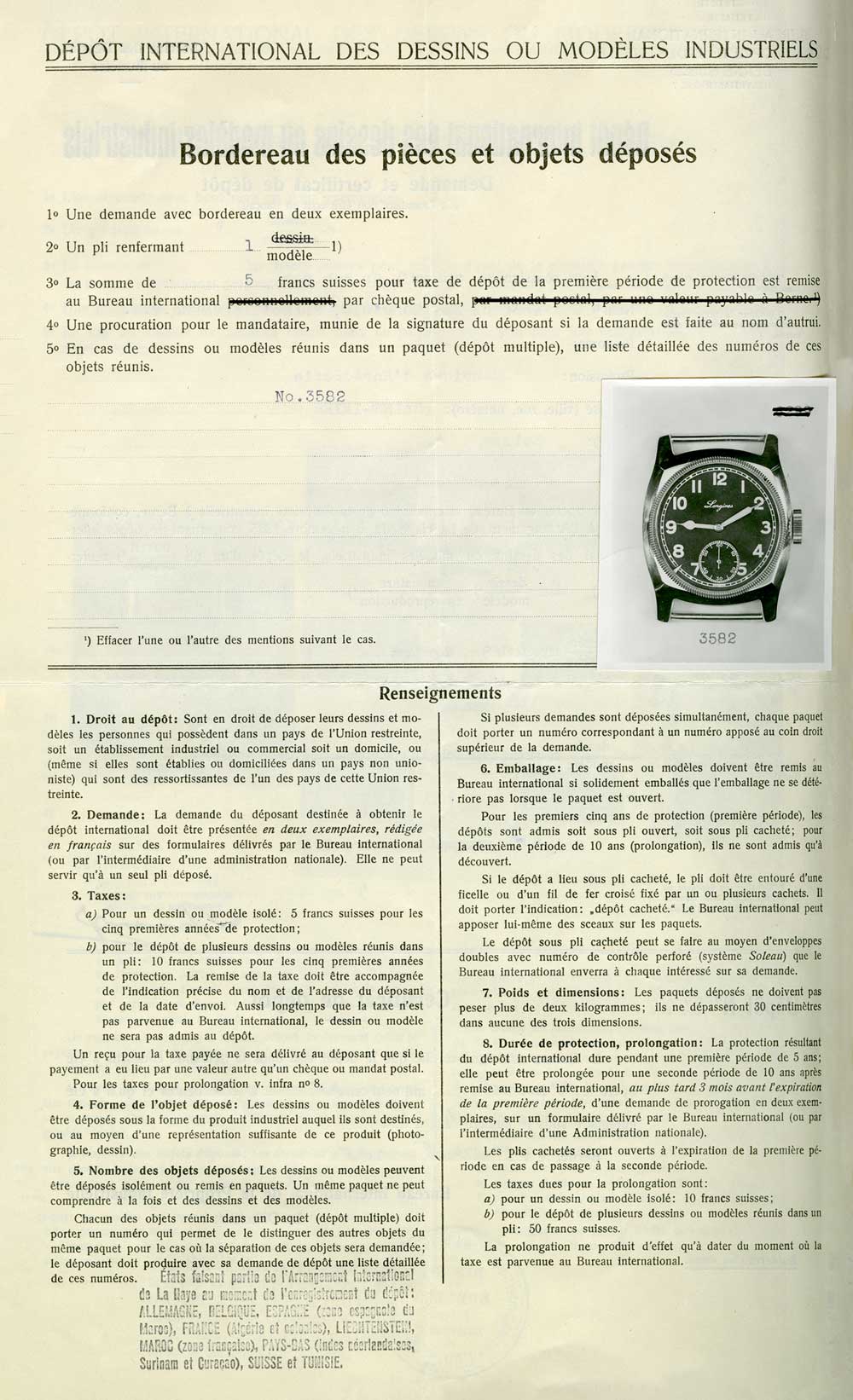
On April 1, 1935, Logines registered the unique cushion-shaped case of Ref. 3582 with the International Industrial Property Office in Bern
The second series of the Longines Majetek was fitted with caliber 15.26, which had an updated design characterized by its large bridge than the previous caliber 15.94 and regarded as more robust for military use. The movement featured a bimetallic balance and steel Breguet overcoil. The black enamel dials were replaced with metal dials.
The third series of the Majetek was produced beginning in 1939, housing Longines’ modern 15.68Z movement. The shockproof 15.68Z movement featured antimagnetic properties valued in cockpits with electromagnetic instruments and equipment. The 15.68Z movement was thinner (5.20mm), and its device to absorb shocks on the movement was denoted in the description as “super shock- resistant”. The accuracy of the 15.68Z with its 19 jewels was at such a high standard that Longines used this caliber to participate in the Neuchâtel Observatory trials from 1942 to 1948.
Longines manufactured the Majetek model from 1935 to 1948, both as military equipment and for civilian use. It is estimated that about 3,000 Majetek pilot’s watches were supplied to the Czechoslovak Air Force.
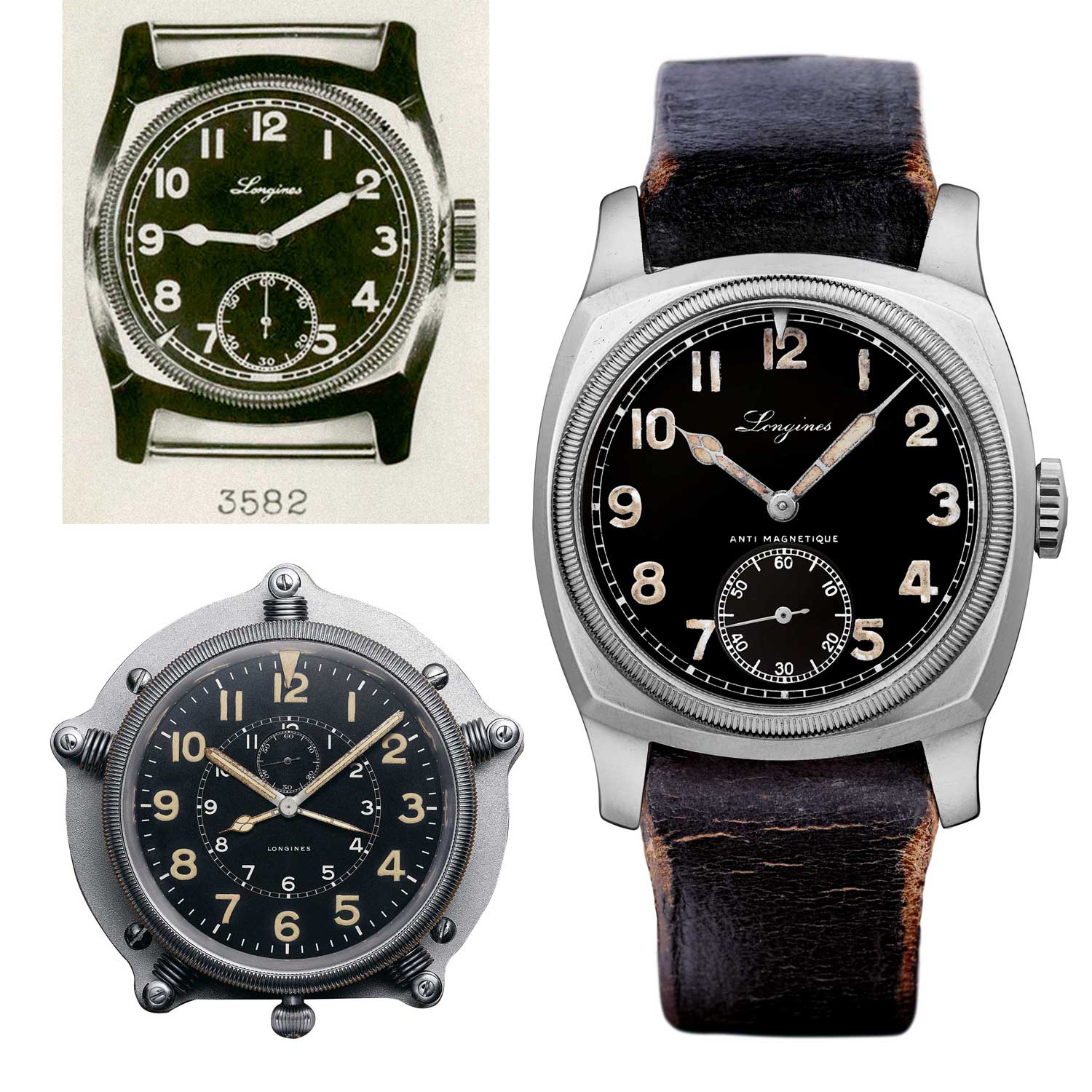
Longines developed different versions of on-board instrument equipped with a double display of hours and minutes; Longines Majetek pilot’s watch commissioned in 1935 by Czechoslovak Air Force that featured a bi-directional fluted rotating bezel with a moving luminous hour marker
The Majetek Heritage 1935
At Baselworld 2014, Longines announced the Majetek Heritage 1935, a watch that paid tribute to the early pilot’s watches created for the Czechoslovak Air Force. The main differences from the original included a slightly larger case at 42mm, the removal of the triangular marker on the now-fixed bezel, date at six o’clock, and the modern ETA 2895-2 movement. Other than the above differences, Majetek Heritage 1935 remained faithful to the historical design with the cushion case, fluted bezel, large crown, matte black dial with white Arabic numerals, and luminous cathedral hands.
The Modern Longines Pilot Majetek
This year, the brand surprises us with the new Longines Pilot Majetek that is a homage to the iconic military watch, yet unapologetically modern. Unlike the Heritage 1935 model, the new Majetek truly captures the spirit and aesthetics of the original 1935 model. With all the technological updates made in this modern pilot’s watch, I am confident it can pass the military specifications with flying colors.
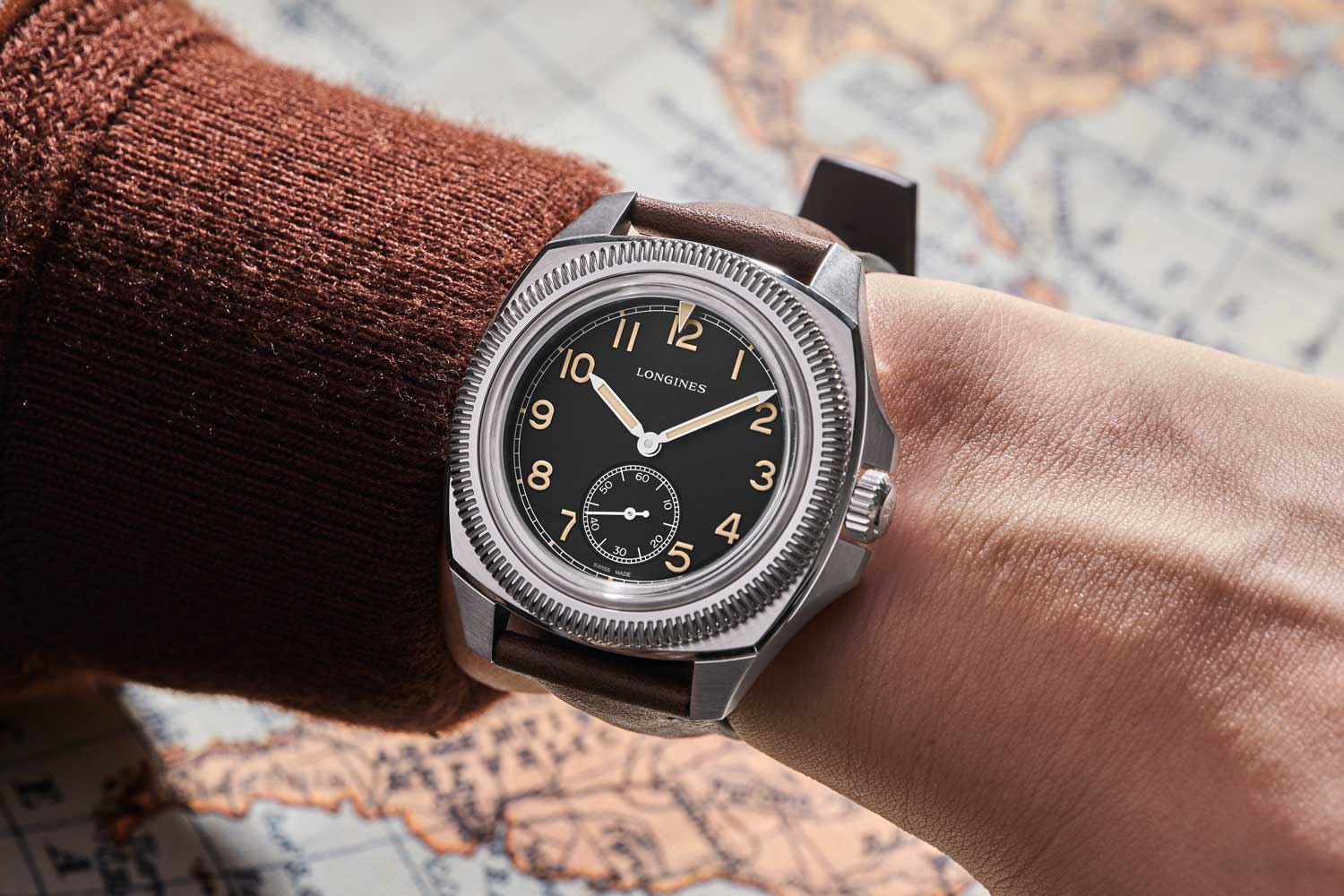
Longines reproduces the oversized look, like the historical model, with a 43mm stainless steel cushion-shaped case
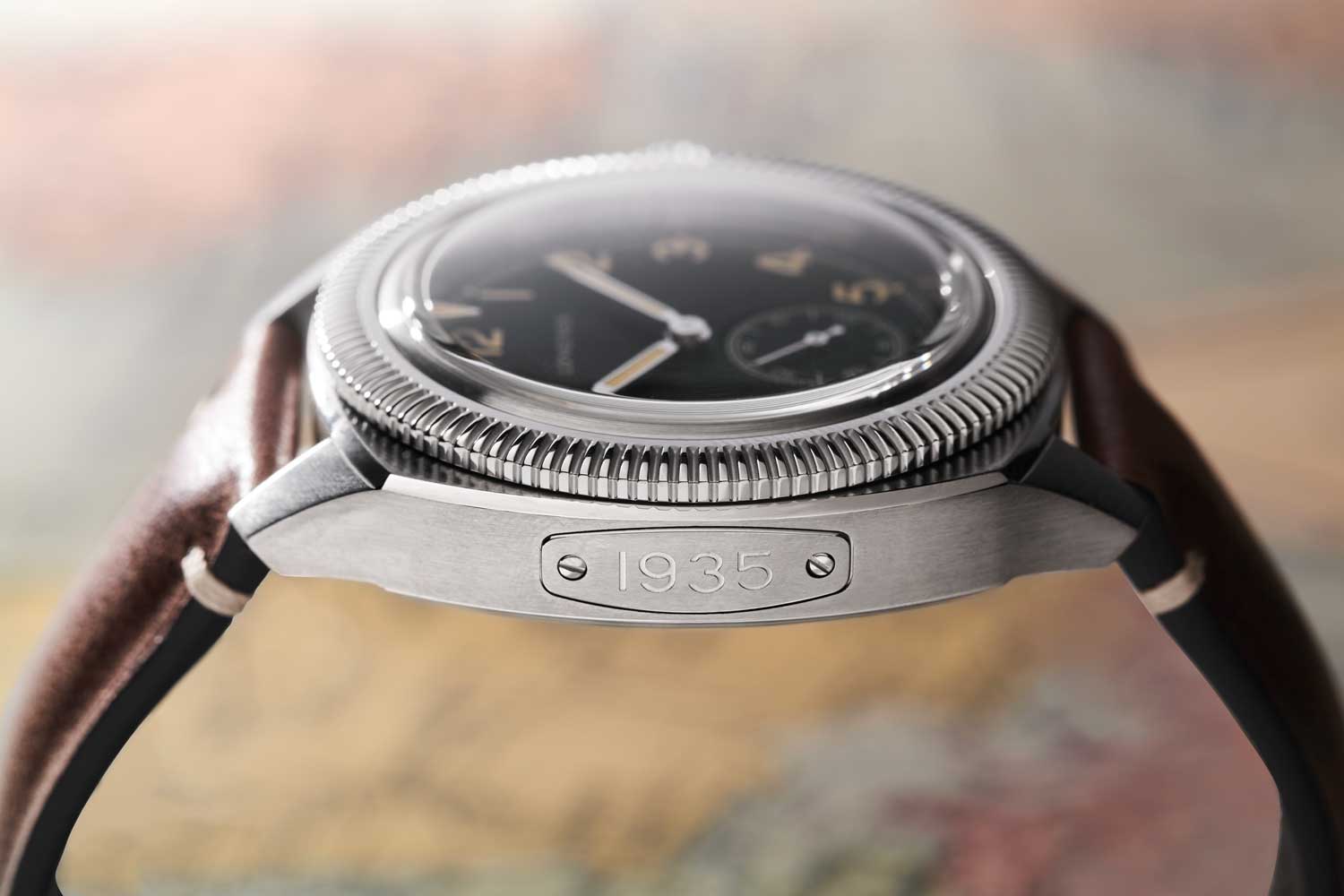
Marked on the side of the case is a commemorative plate that reads “1935” in reference to the original registration date of the first Majetek designed for the Czechoslovak military
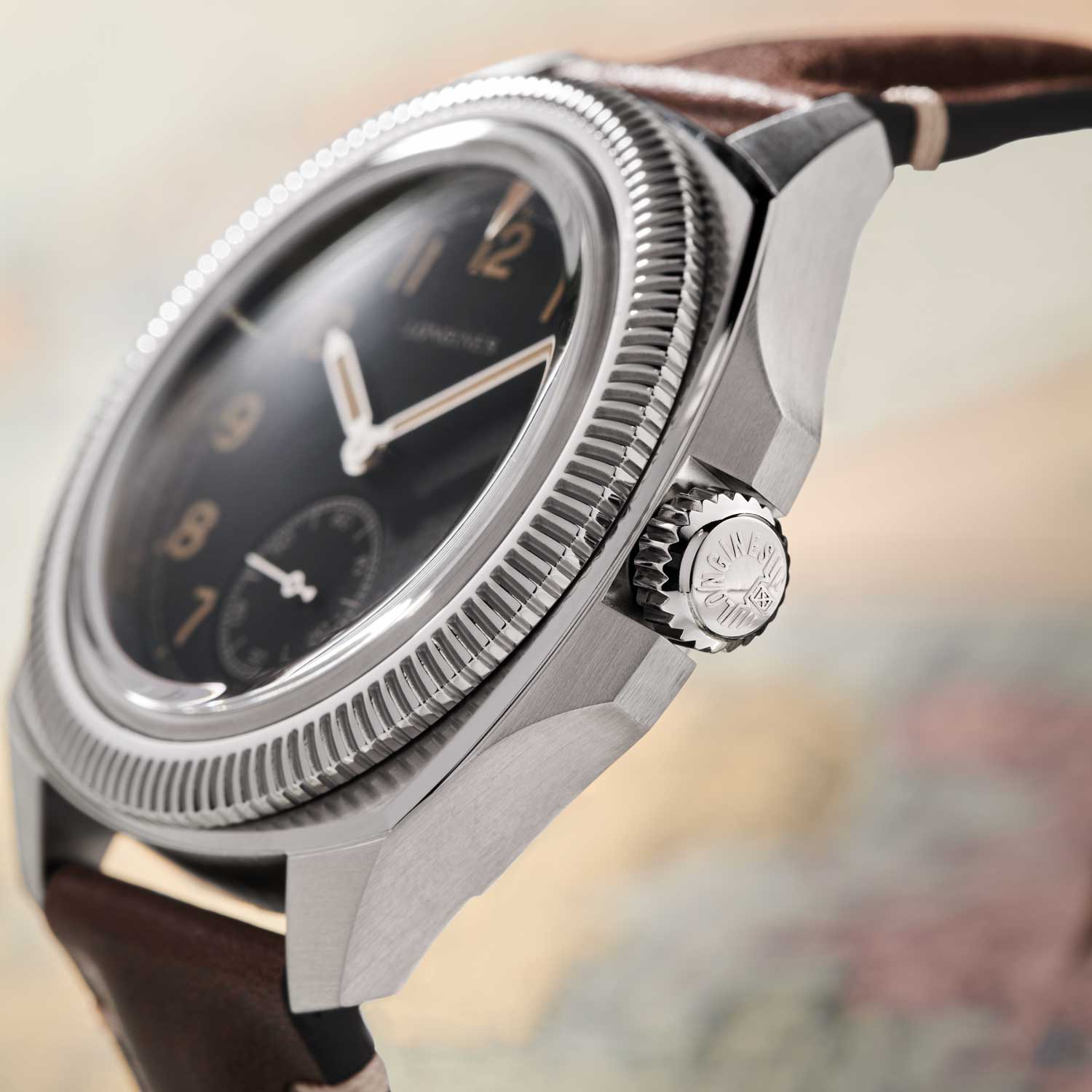
Rather than rotating with the crystal like the historical model, the luminous triangle marker sits below the sapphire crystal and has an independent rotation to help with the 100m water resistance of the case
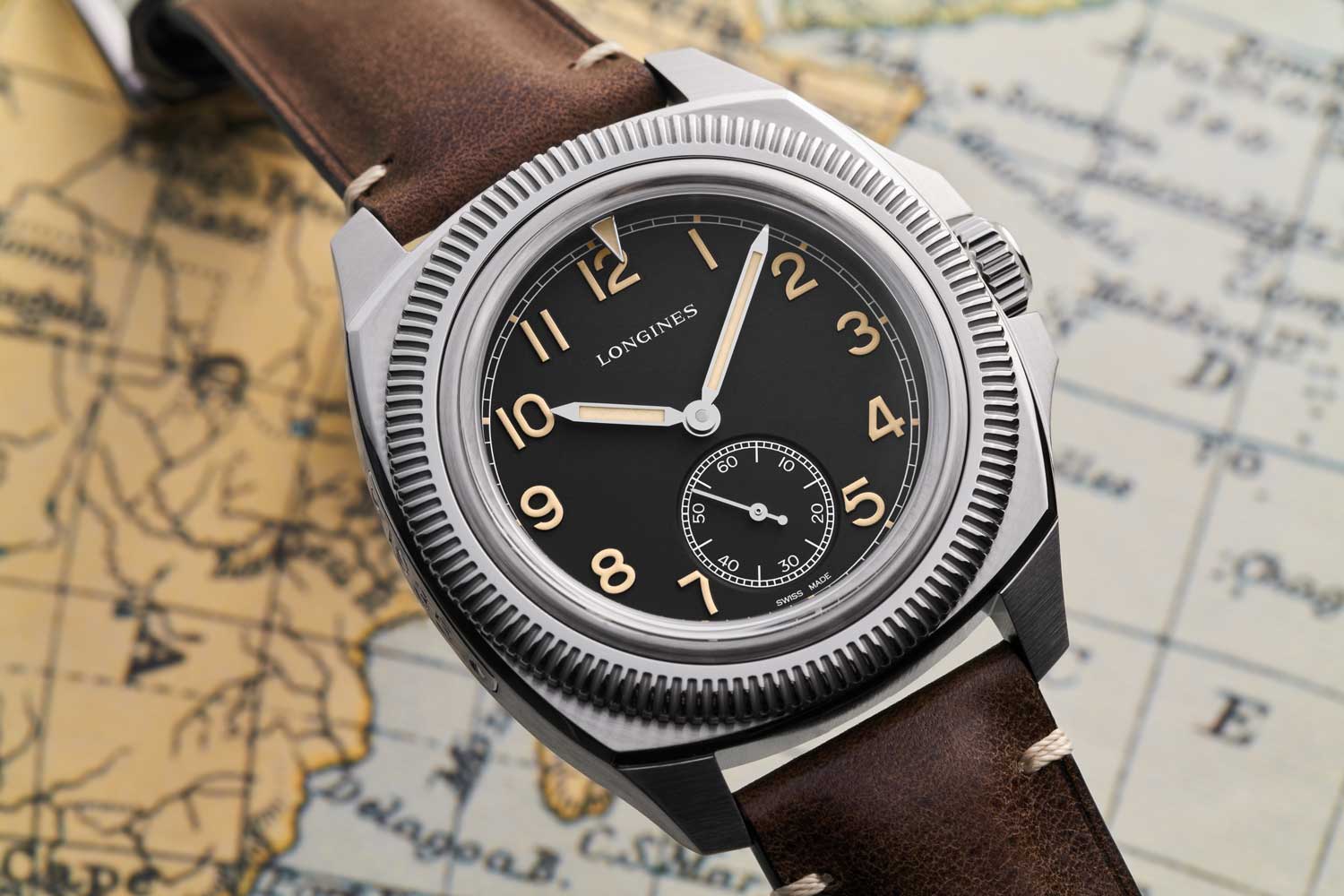
The shape of the case has taken a more curved shape and the lugs have been rounded out for a more modern profile
Precision and Reliability
Made for the pilots who were destined for the frontlines in a war, Longines understood the need for legibility and ease of use. The men that wore the historical Majeteks were soldiers under high-stress conditions, and they needed an instrument watch they could rely upon. There are several examples, nearly a century later, of the original first-issue watches on the collector’s market to this day that speaks to the quality and reliability of this timepiece. Longines has earned their reputation for precise and reliable watches, and the new Longines Pilot Majetek gives us the whole package with a modern finish, the most up-to-date technology and a story that reaches back almost two centuries.
Longines CEO Matthias Breschan sums it up best, “Driven by our incredible heritage and never-ending quest for innovation, we have translated the best of the 1935 Majetek model into the 2023 version. It retains the codes that have made this tool watch famous, like its distinctive cushion-shape design and its fluted rotating bezel with starting time indicator, a technology invented by Longines.”
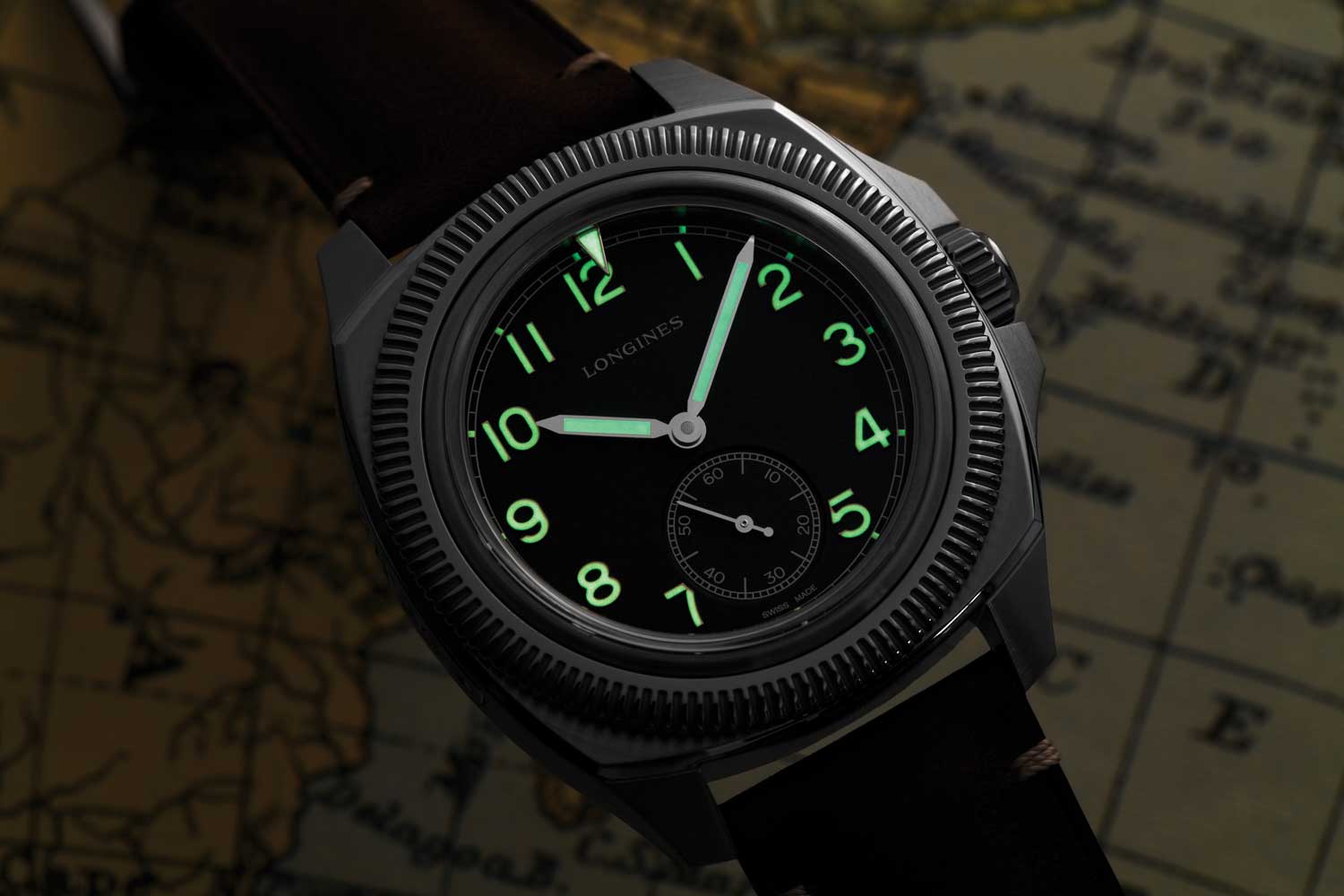
The black dial and white Arabic numerals coated with “old radium” Super-LumiNova will look familiar to fans of the original pilot’s watch
Tech Specs
Longines Pilot Majetek
References: L2.838.4.53.0 (brown leather strap); L2.838.4.53.2 (dark green leather strap); L2.838.4.53.8 (khaki green NATO-style strap)
Movement: Self-winding caliber L893.6; 72-hour power reserve, entire watch is Chronometer-certified by the Contrôle Officiel Suisse des Chronomètres (COSC)
Functions: Hours, minutes, small seconds and “starting time indicator”
Case: 43mm; stainless steel; water resistant to 10 bar (100m)
Dial: Matte black; embossed indexes and “old radium” Super-LumiNova filled Arabic numerals
Strap: Brown or dark green leather, or khaki green NATO-style polyester made from recycled material
Price: USD 3,750 / USD 3,850 Box Set










